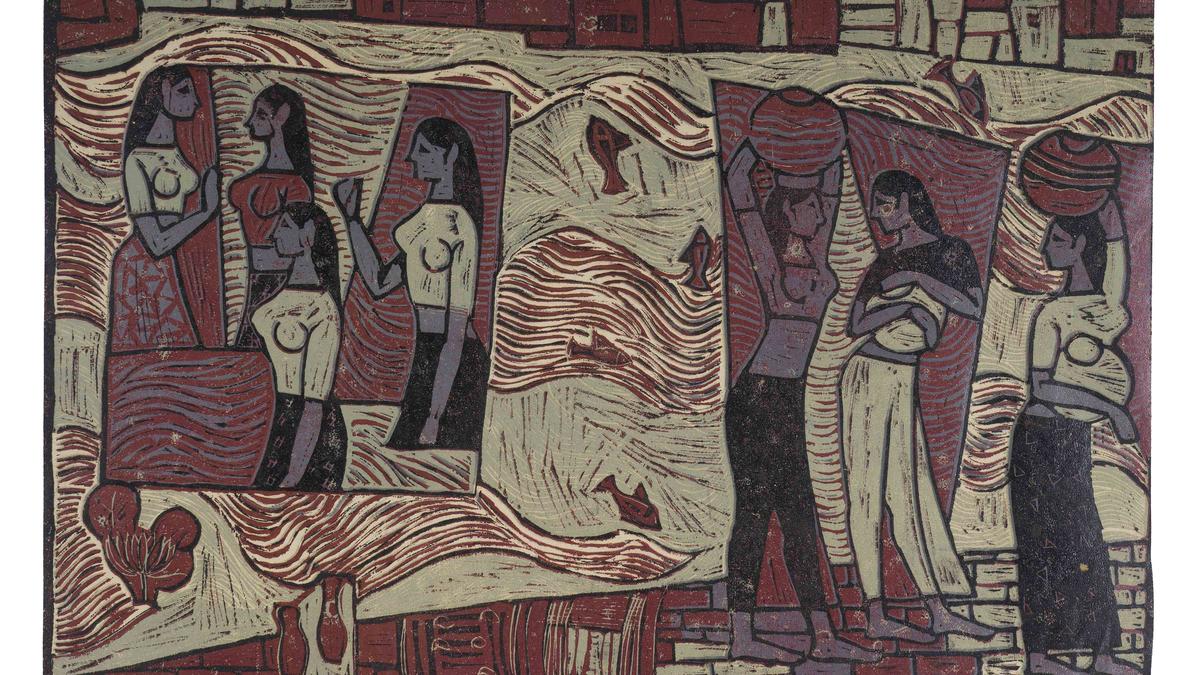We often hear about scientists, musicians, and other innovative individuals who are unaware of the enormity of their work – simply because they are busy creating for the sheer joy of it.
Something similar can be said about Gujarat-based artist Gulam Mohammed Sheikh. The artist, who continues to paint even at the age of 87, is known not only for his art but also for his works of prose. Yet, not many know about his fascination for prints.
Handprints, the first of a two-part retrospective, features 60 prints selected from works from 1965, when Ghulam was still a student, to the present. “There is a vast collection of work spanning seven decades and none of us knew about its entirety, as he is primarily known as an artist and art critic. I have been his student and have known him since 1977, but apart from the occasional print hanging in his home or seen in shows, most of these have not been exhibited,” says artist Pushpamala N, who curated the show.
Pushpamala says that during a conversation about organising an exhibition of Gulam’s paintings in Bengaluru, she learnt that he had never displayed his paintings in a solo exhibition.
Gulam Mohammed Sheikh and Pushpamala N | Photo Credit: Special Arrangement
Printmaking is the process of creating artworks by printing not only on paper, but also on fabric, wood, metal and other surfaces. Some traditional printmaking techniques are woodcut, linocut, etching, aquatint and lithography, while modern methods include screen and digital printing.
“Since the prints are made multiple times using different techniques, there were so many of them that we had to display them in two parts. The part called Handprints has pieces that are made using the traditional approach,” she says.
in context
“I have contextualised his work for this show because he is not only a renowned artist, but also a poet and writer, an art historian and an influential teacher; all of these aspects come across in his works.”
Pushpamala says Ghulam started writing and painting simultaneously, finding his own language and style and thus evolving. “He started writing his memoirs in the late 60s and published it 40 years later,” she says, adding that meanwhile, literary and historical references also appear in his work.
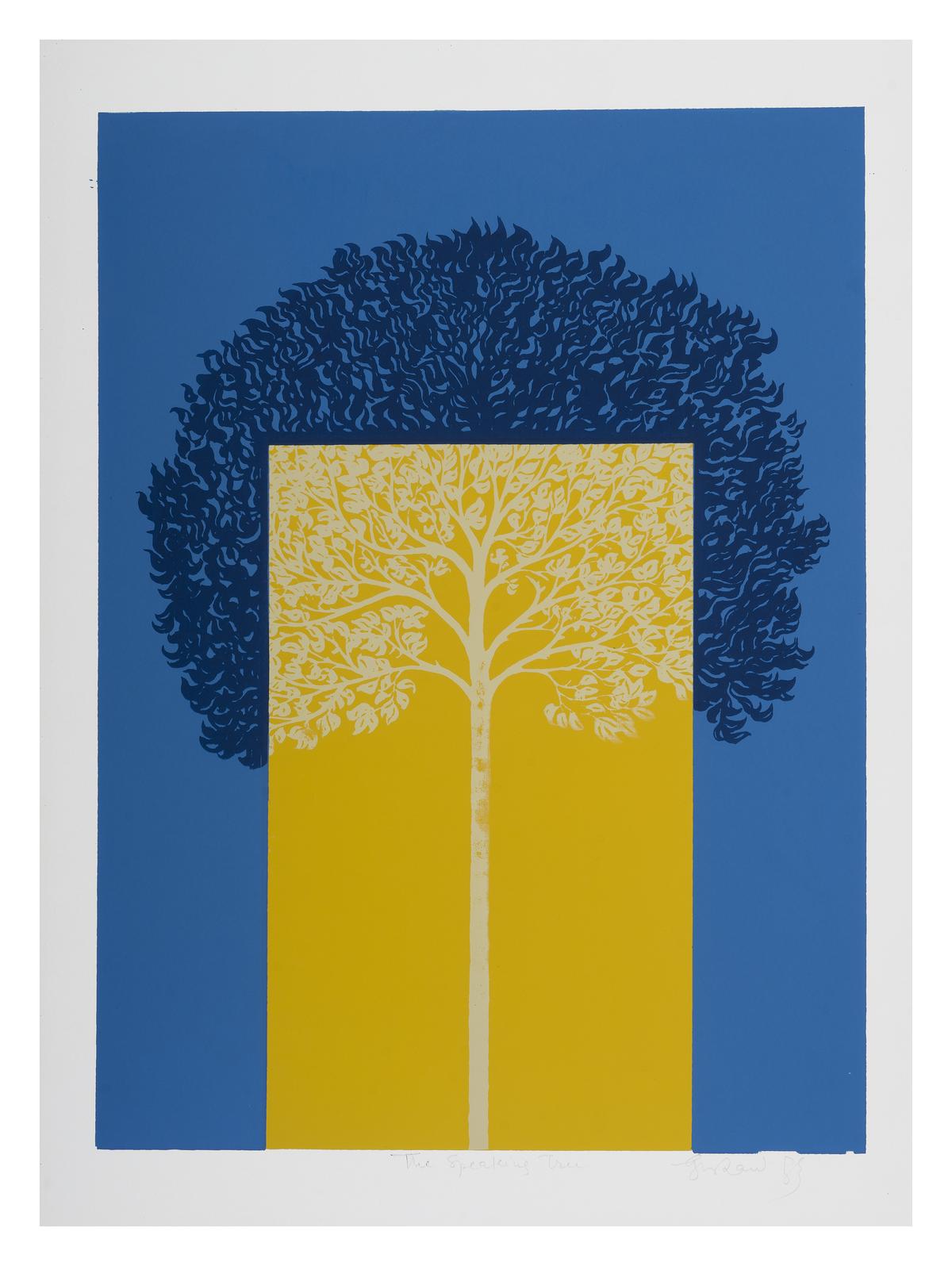
The Talking Tree, silk screen, from handprints, a retrospective on Ghulam Mohammed Sheikh. | Photo credit: special arrangement
For example, his work The Riot is a response to the violent communal riots that took place in Baroda in 1968-69. “Ghulam had always thought of himself as a Nehruvian secular man, who belonged to a world that was open and where everything was free. However, at that time he suddenly realised that he was the ‘other’, especially during those riots.”
Yet, Ghulam’s illustration is not just a short depiction of his life – it is also a tribute to a famous Mughal folio called the Hamzanama. This 16th-century work, published during the reign of Emperor Akbar, is not very well known, but since Ghulam was teaching art history, he came across this work which fascinated him.
Pushpamala says she has shown his works in chronological order, linking them to his own history and the events that happened at that time. “I also see it as teaching. A lot of students come to the show and these works are a testament to Gulam’s enthusiastic attitude. He loves working with different techniques and media, experimenting with anything new he hears.”
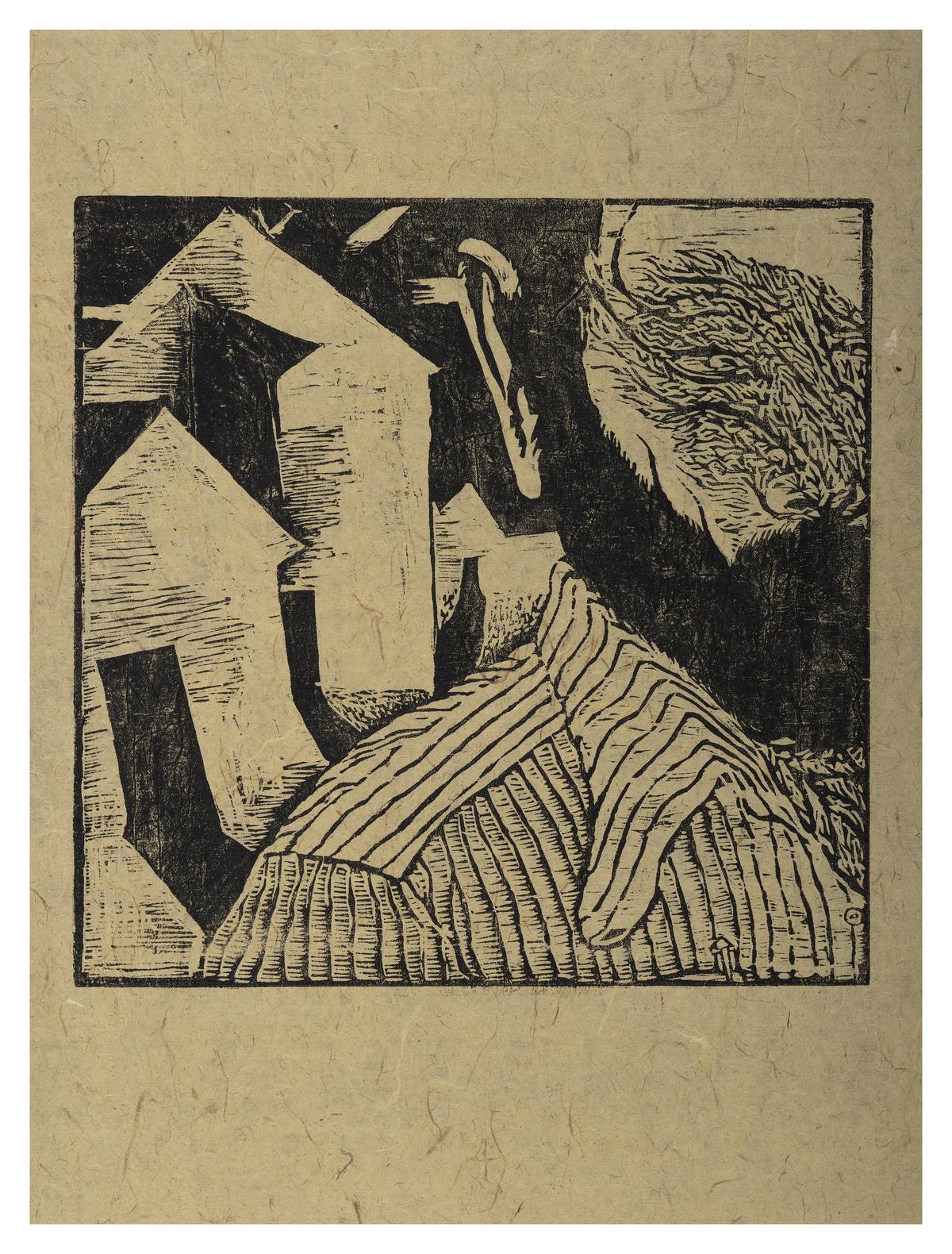
Untitled woodcut from handprints, a retrospective work on Ghulam Mohammed Sheikh | Photo credit: special arrangement
The woodcuts, linocuts, etchings-aquatints, lithographs and silkscreens displayed in Handprints bear testimony to his skill.
Return to the past
The handprints also include handwritten journals, comic strips and drawings made by Gulam as a school student. “I think today’s young artists who make journals will feel connected to his work,” says Pushpamala.
By the age of 15, Gulam started painting. Progress, Your school’s literary magazine, Moving Forward Horizonan avant garde literary magazine while he was an art student. By then he had learned the art of printmaking and editions Horizon, which contained both his poetry and prose, benefited from lino cuts and other illustrations provided by him and fellow editors.
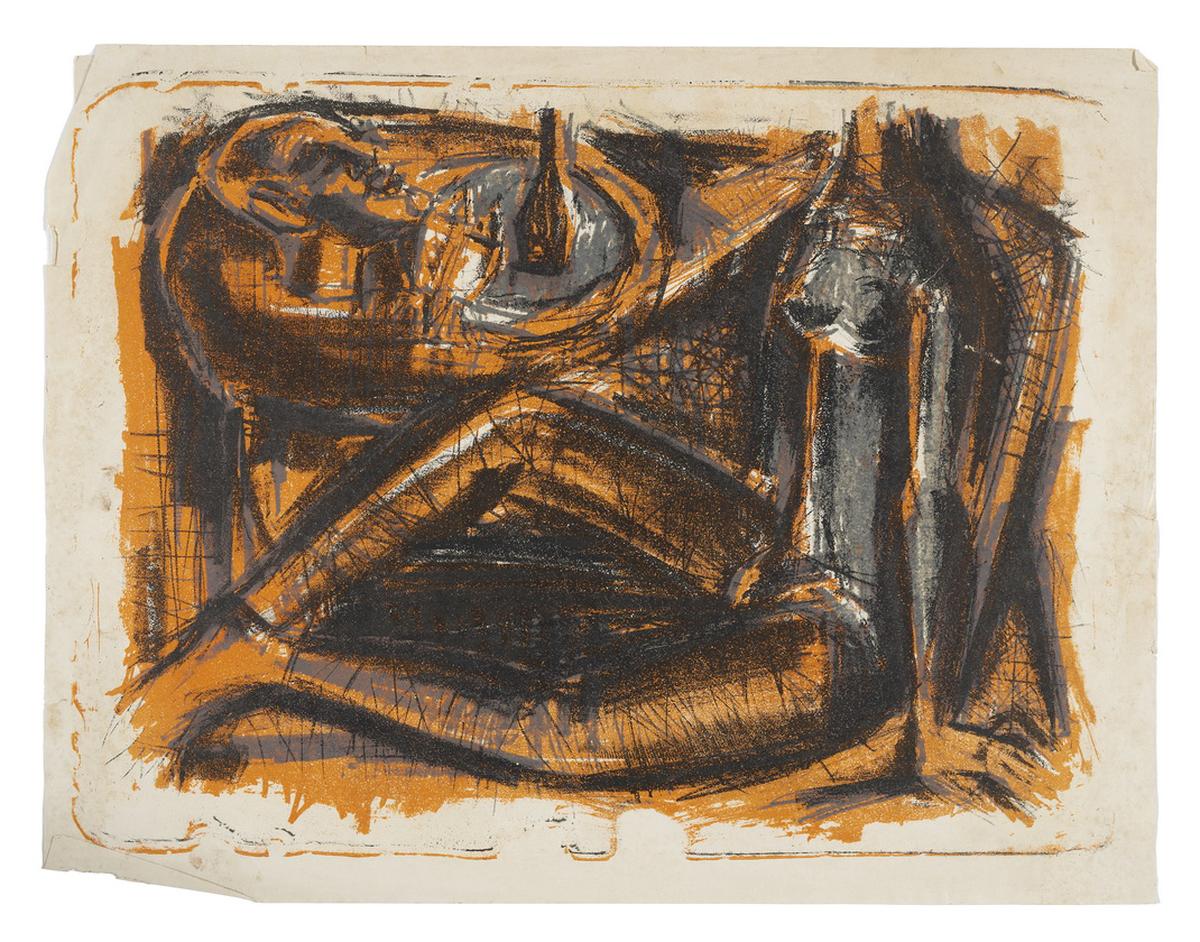
A retrospective book on Ghulam Mohammed Sheikh, Still Life from Handprints, Female Figure with Lithograph | Photo Credit: Special Arrangement
Gulam also founded a magazine Scorpio with Bhupen Khakhar while teaching art history in Baroda. The magazine aimed to initiate debate, dialogue and discussion among the art community, using linocuts and lithographs in its cover as well as pullouts.
Pushpamala believes that Gulam’s art was thus disseminated in various ways in the literary and public spheres.
next
Mindprints or the second part of this retrospective which will be on display from August 17, is more contemporary and colourful. “The first part is monochromatic due to the nature of traditional printmaking techniques,” says Pushpamala.
Pushpamala explains that mindprints involve digital prints. “Ghulam is one of the pioneers of this technique in India. He started working on it in the late 90s and early 2000s. That was the time when this technique first came up – at that time people were sceptical about the genre and dismissed his work as rubbish.”
Ghulam’s fascination with the pre-Renaissance art of the West, Persia, Turkey and China, comes across in his contemporary work, as do autobiographical references to his family and friends. His view of cities and fascination with maps are also recorded in Mindprints.
Pushpamala says that Gulam’s depiction of cities is not a realistic approach but a distorted imagination. “His maps have a touch of magical realism and miniatures, some of which open like books. In others, images of snakes and ladders decorate the city boundaries or outlines”
“Sometimes, you’re looking into a courtyard and something’s happening around him. Sometimes it’s not a direct reference — Slave is referencing different kinds of paintings and historical events.”
The exhibition features a 45-minute video of a conversation between Gulam and artist Vasudevan Akittam.
Artist Gulam Mohammed Sheikh’s ‘Handprints’ exhibition will continue till July 27 at Gallery Sumukha.
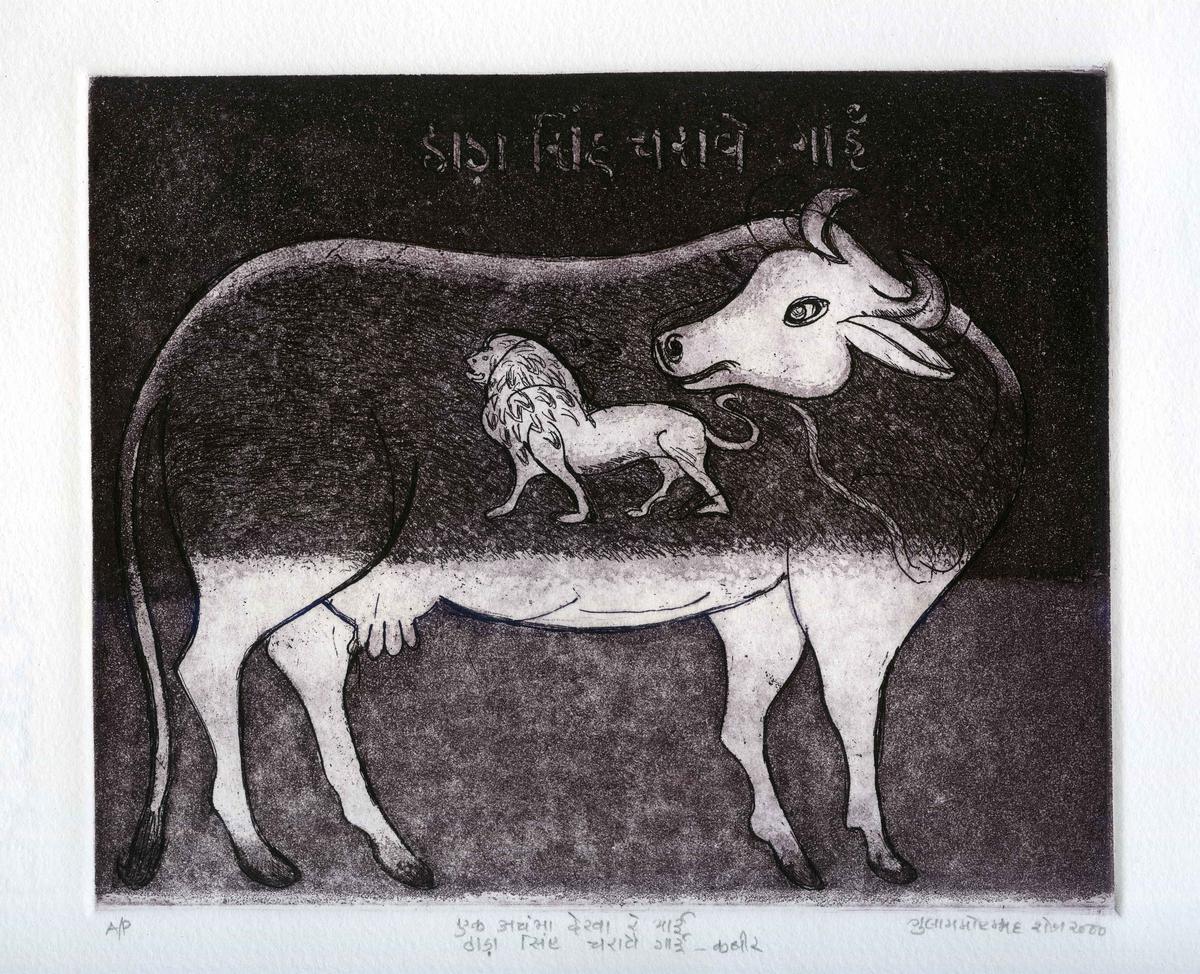
I Saw a Wonder, Brother, etching-aquatint, from handprints, a retrospective on Ghulam Mohammed Sheikh | Photo Credit: Special Arrangement
